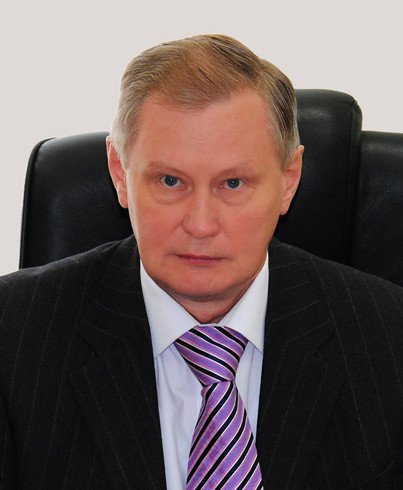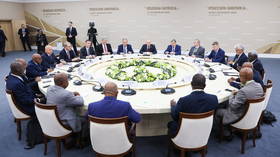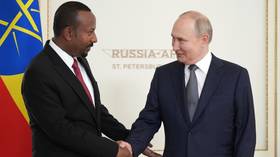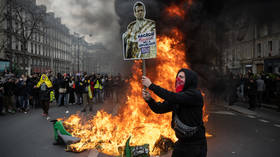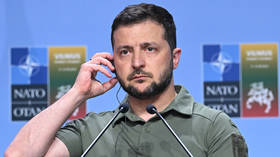Mikhail Khodarenok: Western talk about a 'new stage of Ukraine’s counteroffensive' is just a cover-up of the operation’s failure
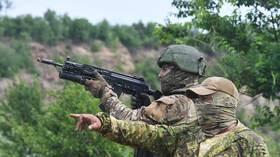
This week, the Armed Forces of Ukraine (AFU) began the main thrust of their counteroffensive and transferred thousands of additional troops for the attack, the New York Times reported, citing the Pentagon. According to the newspaper, these soldiers were in the reserve force and many of them were trained in the West. The site of the “main thrust” is south of Orekhov, in Zaporozhye Region. Some of the reserve formations that Kiev hadn’t pulled into battle before have already been transferred there. If Ukraine manages to break through the Russian defense, this will allow the AFU to move towards Tokmak and then to Melitopol near the Sea of Azov.
Other sources among US officials said the latest Ukrainian offensive could be a preparatory operation before the main thrust or it may provide reinforcement for the existing units.
Similar information was published a few days earlier by the German daily newspaper Bild, which stated that the second phase of the counteroffensive would begin immediately after the frontline territories are cleared of mines.
A statement by US Secretary of State Antony Blinken also backs up these conclusions. Earlier, he said Ukraine may achieve success when it fully deploys all its resources.
Meanwhile, we are approaching a sort of anniversary – the AFU’s much-hyped counteroffensive has been going on for almost two months. However, everyone is fully aware that this operation isn’t going according to the original plan. This allows us to draw some conclusions.
What goals did Kiev set?
To begin with, we need to properly define some terms when speaking about Ukraine’s counteroffensive. For, as Napoleon Bonaparte said, to name something correctly is to understand it correctly. From a military point of view, it is incorrect to call this the “second wave,” “second stage,” or “second phase” of the AFU’s counteroffensive. When an offensive operation is planned and carried out, there are no “waves,” “phases,” or “stages.”
When an offensive is planned, two important things are determined: the operation’s immediate goal and its further goals. The immediate goal is usually to defeat the forces of the enemy’s first operational echelon, get to its main forces, and capture important frontiers to undermine the enemy’s capacity for strategic defense and create favorable conditions for the further course of the counteroffensive.
Capturing settlements like Pyatikhatki, Rabotino, Urozhaynoye, Kleshcheyevka and others is in no way an “immediate goal” of the AFU’s ongoing counteroffensive. Even the hypothetical re-capture of Artemovsk (Bakhmut) cannot be considered such. For the Ukrainian Army, the immediate goal would be at least the capture of Melitopol. Which is a major city, as opposed to a relatively small town.
So we may safely say that the AFU has not even gotten close to reaching its immediate goal in the course of the counteroffensive.
For this reason, discussing the AFU’s “further goals” is not even worthwhile. Theoretically, these could involve the defeat of the enemy’s first operational echelon, its operational (and in some cases, the nearest strategic) reserves, and the capture of key objects and areas in order to achieve the goals of the counteroffensive. For the AFU, a successful accomplishment of the counteroffensive’s further goals would mean a return to 1991 borders. But so far this remains only a dream for Ukraine’s military and political leadership. Consequently, we may say that the counteroffensive operation has been carried out, and the set goals have not been achieved.
What went wrong?
A few days ago, the Minister of Defense of Ukraine Alexey Reznikov said the AFU’s operation “is behind schedule but is going according to plan.” At the same time, he added, “The main value for us is the life of our soldiers.” In reality, these statements cannot be called anything other than absurd.
When a counteroffensive is planned, it is true that certain schedules are devised. For example, there is the combat control schedule (or the planned interaction table). This is put together for each day of the operation. Missile troops and the artillery also have a schedule for preparing and striking priority targets. But to claim that the AFU’s operation is “behind schedule” is to demonstrate a certain operational ignorance.
Meanwhile, saying things like “our counteroffensive is going slowly because we are sparing our people” is only an attempt to justify the apparent failure of the operation.
The Ukrainian community of experts also occasionally voices the idea that the AFU is currently conducting “formative” and “test” operations. This sounds rather unconvincing. Firstly, there is no such thing as “formative” or “test” operations in the theory of operational art. There are only combined arms operations that start at the level of the army corps. If the attacks are carried out by battalions or brigades, this is no different than regular combat operations. So, the Armed Forces of Ukraine aren’t conducting any operations in any of the directions yet. Based on the results, their attacks can be characterized as local battles conducted to improve the positioning of the troops, and nothing more.
Ukrainian experts have also expressed the idea that “we are slowly grinding the enemy’s forces and resources, and sooner or later there will come a moment when the enemy’s defense will collapse either at one important point or in several areas.”
If Ukraine were waging a war against a small state with a small population and a military-industrial complex with limited potential, such a technique could prove effective sooner or later. But fighting against a country with mobilization capabilities that greatly exceed Ukraine’s, and a military-industrial complex which is speedily gaining momentum, is a very unpromising strategy.
Every single day brings Ukraine closer to the exhaustion of its own resources. Kiev loses personnel and equipment, and the Ukrainian Army uses up its scarce stocks of ammunition.
Ukraine’s military-political leadership has repeatedly stated that not all trained reserves have been pulled into battle yet. Again, this sounds strange. The number of reserves, their equipment, and level of combat and operational training is one of the top state and military secrets. The timely (and most importantly, surprise) entry of strategic reserves into battle can change the entire course of the armed conflict. But openly talking about this is like turning military science upside down.
What’s next?
The AFU’s attempt to begin a counteroffensive on June 4 without having air and fire superiority was a strange enterprise from the very start. In the current circumstances, it is unlikely that the ongoing operation will bring about any convincing military or political results.
Moreover, to break through Russia’s well-equipped defense, Kiev needs a much greater number of missiles, troops, artillery, armored forces, and engineering troops.
The failure of the AFU’s current counteroffensive will also result in the failure of the Ukrainian Army’s entire summer-autumn campaign, since after the loss of so many servicemen and a lot of equipment it will hardly be possible to restore its offensive potential before late autumn or even the beginning of winter 2023/24.
In order for Ukraine’s second counteroffensive to be a success, Kiev needs to receive many multirole fighter jets, greatly increase supplies of self-propelled artillery units, tanks, attack helicopters, and get large stocks of ammunition for barrel artillery and MLRS.
At this stage, it seems that the first counteroffensive is approaching a fruitless conclusion, and the second one will not happen soon. In particular, the transfer of the first F-16 fighter jets to the AFU is expected no sooner than winter. Therefore, it is quite possible that the second counteroffensive will begin in the spring of next year.
The Russian Army, however, won’t sit idle during this time. It may launch an offensive of its own and impose its will on the enemy.
***
In conclusion, I want to stress that making forecasts is generally a fruitless endeavor, especially long term predictions during ongoing military operations. All significant wartime events are of the “black swan” type. This means they are unexpected for everyone (and the expert community first of all) but have very significant consequences. In the course of hostilities, these “black swans” can “swim out” not just one by one, but in whole squadrons and flotillas. However, the Armed Forces of Ukraine will not get F-16 fighter jets before this winter. And without the jets (or rather, without a sufficient number of them), launching a second counteroffensive would be a doubly risky endeavor.
